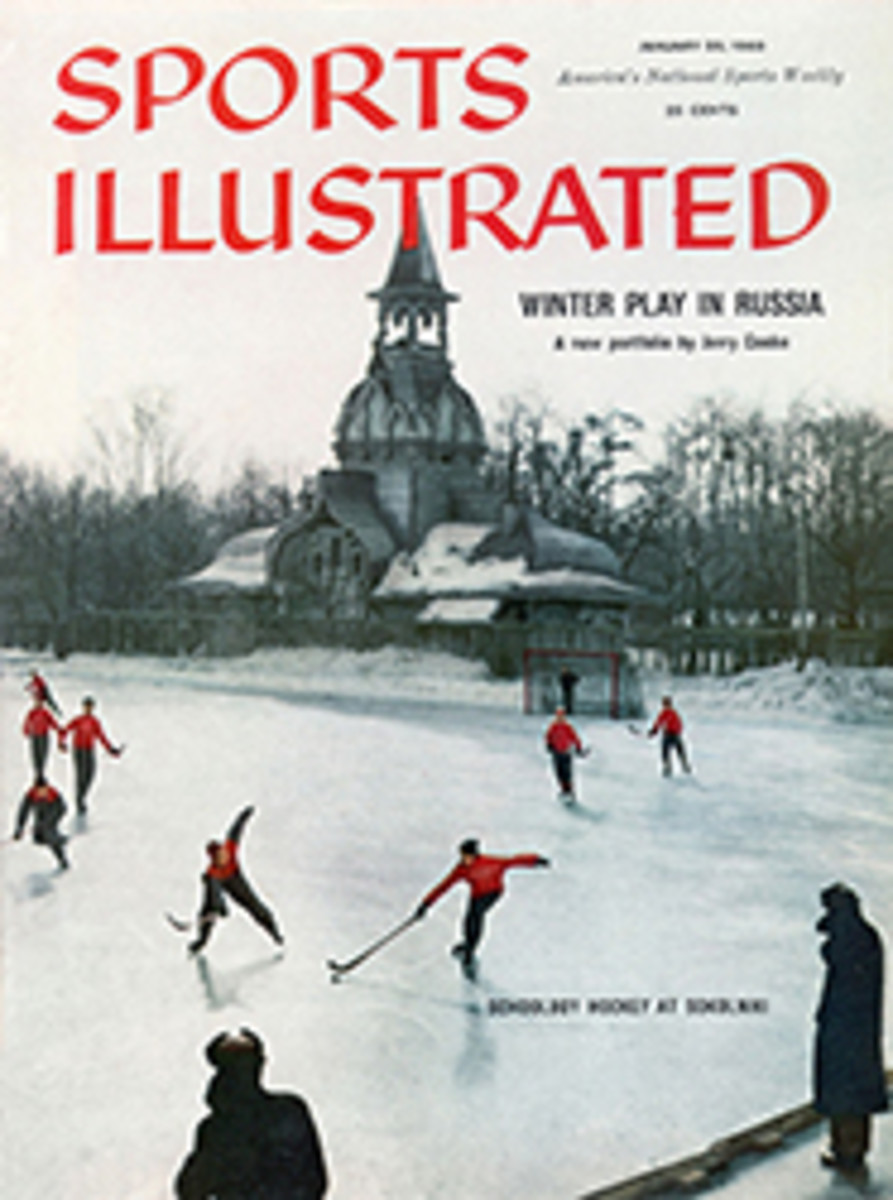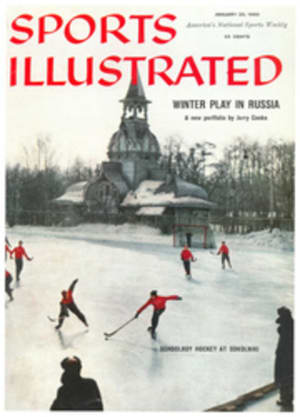
The way to win with horses
By sheer number of races won, the most successful trainers in the U.S. in recent seasons have not been the famous veterans like Sunny Jim Fitzsimmons but, rather, three little-known men who are virtual newcomers to the sport.
They are 39-year-old Vester R. Wright of Gallatin, Tenn., who was leading trainer in 1959 with 172 winners, 41-year-old Frank H. Merrill Jr. of Brantford, Ont., who was second with 162, and 60-year-old William Hal Bishop of Anna, Ill., third with 161.
What they have in common—besides success—is a strategy of concentrating on claiming races and trading, buying and selling horses in a steady turnover of their stock.
Claiming races are a device for equalizing competition in order to insure a constant flow of entries, closely fought races and, therefore, a good volume of betting. In these races, horses are classified according to the value put on them by their stables. A horse that a trainer believes is worth about $5,000 is entered in a $5,000 claiming race to meet other horses of about the same value. To prevent owners from entering in a $5,000 race a horse really worth, say, $12,000, all those entered in the race are liable to be claimed for purchase at $5,000; a trainer who has started at least one horse at a race meeting is eligible to claim any horse starting in any of the claiming races at that meeting. Most races at American tracks are claimers (ranging from $1,000 to $20,000), simply because there are many more cheap horses than good ones.
The most successful horsemen in the claiming division have the skill to detect subtle faults and weaknesses—and hidden virtues—in their horses and in rival horses, as well as the alertness to take immediate advantage of that insight. Wright, Merrill and Bishop are just such expert observers and operators; their mental file on thousands of horses is extraordinary.
Wright—called Tennessee—has been the leading trainer three times in the last four years. Since 1949 he has averaged 115 winners per season, principally with horses owned by T. Alie Grissom, James L. Paddock and E. J. Grosfield, his major patrons ever since he began his career as a trainer.
Hard-working, hard-playing, hard-betting Wright was raised on the famed Foxland Hall Farm at Gallatin, Tenn., which his father managed for 17 years. Wright rode at hunt meets, served a hitch in the Air Force during the war and then decided to settle down as a plumber's assistant. But he found that jockeying a Stillson wrench was too sedentary for his tastes; he turned to horse racing and landed a job as a groom with the stable of Detroit's Perne L. Grissom, Alie's brother.
Wright rose to foreman of the outfit and later was hired as a trainer by Alie Grissom, Paddock and Grosfield and later became a one-quarter partner in the stable. Tennessee handles horses for other owners as well, charging a flat $12 a day per horse training fee plus 10% of the winnings.
"I've got about 70 head in New Orleans," Wright said recently. "Some 45 are stabled at the Fair Grounds and another 25 are at the Magnolia track across town with my foreman, Gordon Potter. I carry something like 50 men, and my expenses run me between $30,000 and $35,000 a month." Tennessee has to win plenty of races to stand the nut, and he does. His stable earned well over half a million dollars during 1959, and he points out that in 11 years of training, he has never had a losing season. He has an excellent eye for young horses. He purchased Money Broker at the yearling sales for $3,300, and the colt won the $100,000 Florida Derby plus other good stakes.
Wright and William Hal Bishop now leave each other's stock alone by mutual agreement, but before this truce was reached Tennessee once claimed (or "haltered," as they call it around the tracks) a horse named Shoerullah from Bishop for $10,000 and went on to win about $75,000 with him.
BUSINESS IS BUSINESS
"There's no such thing as 'friends' when you're claiming horses," Tennessee says. "I don't feel bad when I take a horse from a man, and I don't feel bad when he takes a horse from me. A trainer who burns when he loses a horse shouldn't be running in claiming races."
Wright, a moderate bettor, encourages his men to bet on the horses they handle, too. He is one of the first men at the track each day, but once his horses are in condition, he prefers not to work them out in the morning. He thinks racing is enough to keep them fit. "Can't win no money in the mornings," he adds.
THE MERRILL METHOD
Frank Merrill, a tall, thin, introspective Canadian, has been second-best trainer three times and top trainer twice in the past five years. Racing both in the U.S. and Canada, Merrill has averaged more than 100 winners a year. He rode briefly along the fair circuit in Canada as a boy, studied training under veteran horsemen George Alexander and Matt Ray, for whom he galloped horses, and in 1944 bought an old plater on credit from the Seagram Stable for $300. He paid the debt off with his winnings and gradually built up a public stable in the Toronto area.
"I keep about 35 head in the barn all the time," Merrill said this winter at Miami's Gulfstream Park. "I charge my patrons a flat $8 a day per horse in Canada and $12 in the U.S. and I take 10% of all first, second and third moneys. I've found it costs me $7.50 a day in Canada to feed and care for each horse and $10 in the U.S., so you see I make almost nothing from my trainer's fee. I earn money only if my horses win or are close."
Merrill, who claims and sells horses for himself as well as for his sponsors, haltered Sampan for $6,000 and won $55,000 with him. He also got quite a bit of mileage out of Hickory Hill, whom he claimed for $12,500 and with whom he once won almost $50,000 in a single season.
"I expect to lose my horse every time I run him in a claiming race," Merrill says. "I don't feel good about it when I lose one, but I don't feel bad about it either. As long as you run them where they belong, you're all right. I like to claim horses who have shown some consistency, and I particularly like an old stakes horse who is dropping down in class. The condition of a horse's legs don't mean too much to me because I like to work on legs."
Merrill is famous for applying hot wax casts to bowed tendons, an art he learned from a German veterinarian. "I apply the hot wax from the knee down," he says, "and then cover it with a plaster mold. It's excellent for stimulating blood circulation, much superior to firing which can destroy healthy tissue."
A BACKGROUND IN MULES
William Hal Bishop, the senior of the three, is one of the most colorful men on the American turf. Burly and backwoodsy, he resembles the late Wallace Beery. Since 1949 he has tied for the trainer championship once, has been second four times and third twice. He once operated the world's largest mule auction, and he is still his own boss. His horses race in the silks of William Hal Bishop Stables, Inc., a corporation consisting of himself, his wife and his sister, and he has averaged 127 winners per year.
Bishop grew up in the mule business. The auction he operated at Anna, Ill. frequently sold as many as 1,000 mules a week to foreign and domestic buyers. When business was slow, he and his wife would pack a tent and take a string of 40 or 50 mules through the hills of Arkansas, selling and trading with farmers. Bishop's "edge" came in his knowledge of and skill at mule dentistry. He could file down a set of teeth to make an 8-year-old mule pass for a 4-year-old, which of course brought a higher price. Paradoxically, perhaps, he also served a tour as police chief of Anna.
By 1943 the tractor was putting the mule out of business, and Bishop started to retire. "I'd been racing a few cheap horses in the Midwest since 1938, and when I gave up the mule business, my wife suggested I train the horses myself. I began in 1944, and I found that my experience as a mule dealer stood me in good stead. I could spot a bad knee or ankle at 100 feet."
Bishop has about 60 head of horses in his barn in New Orleans, and he estimates his inventory at about $800,000. "Expenses are very high," he points out, "and they're getting higher each year. I would guess my operation runs me between $6,000 and $6,500 a week. I carry 32 men, including grooms, hot walkers, exercise boys and foremen. Hay is $80 a ton here in New Orleans, and oats are $5 for a 90-pound sack. You can see I've got to win a lot of races to break even."
Bishop claimed Hare Raising for $7,000 and won $56,000 with him. He bought Pete's Folly for $20,000, and so far Pete's Folly has won more than $100,000. His most memorable buy was Bernburgoo, who cost $45,000 a few years ago. Bernburgoo, now standing at stud in Bishop's first breeding venture, won more than $170,000 and beat the mighty Round Table in the 1958 Warren Wright Memorial Handicap at Arlington Park. "I run my horses to win purses," Bishop says, "and we've averaged $600,000 a year for the past several seasons. If I can't be first, I want to be second. Don't forget that second, third and fourth money adds up."
Bishop, Wright and Merrill, clearly enough, are all businessmen of a very practical turn of mind. They know their trade thoroughly, they work hard at it, and they take great pride in their success.
And they're the easiest men to find at a race track. They're usually in the winner's circle, one of them or another.
PHOTO
TENNESSEE WRIGHT was the leading trainer in 1959 with 172 winning races.
PHOTO
FRANK MERRILL directs a public stable, was top trainer twice in past five years.
PHOTO
WILLIAM HAL BISHOP turned from mules to horses, owns and trains his own stable.

